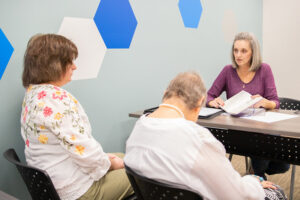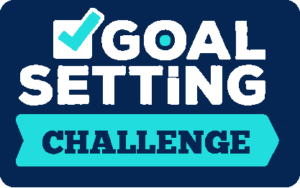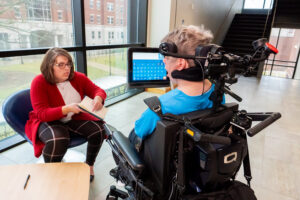Want to see our current research projects around self-determination and related work?
Selected Projects

Kansas Self-Determined Transition Taskforce: Moving Forward to Enhance Transition Outcomes

Kansas Self-Determined Transition Employment Partnership (K-STEP): Youth-Led Systems Change for Enhanced Transition and Employment Outcomes

Kansas Health and Research Partnership (K-HARP): Building Capacity for Self-Determination
Current Publications
Research on the Self-Determined Learning Model of Instruction over the last 25 years has shown that teachers can use the SDLMI to enable students with and without disabilities to reach goals while they are in school and after they finish school. Over 20 research studies have shown the impact of the SDLMI on outcomes, establishing it as an evidence-based practice to promote self-determination (Hagiwara et al., 2017; Lee et al., 2015; Mazzotti et al., 2021; Test et al., 2016). A selection of recent studies that describe the evidenced-based practices is presented here:
Student and Teacher Perceptions of Goal Attainment During Intervention With the Self-Determined Learning Model of Instruction — Shogren, Hicks, Raley, Pace, Rifenbark, & Lane (2021)
Student and Teacher Perceptions of Goal Attainment During Intervention With the Self-Determined Learning Model of Instruction — Shogren, Hicks, Raley, Pace, Rifenbark, & Lane (2021)
Participant data:
Total Number: 647
Disability: Students with and without disabilities*
Age/Grade: 9th - 11th Grade
Delivery Type: Inclusive Academic Course
Outcomes:
Students with and without disabilities set goals using the SDLMI and were able to establish Goal Attainment Scaling rubrics and make Goal Attainment Scaling ratings.
The Impact of the Self-Determined Learning Model of Instruction on Student Self-Determination in Inclusive, Secondary Classrooms — Raley, Shogren, Rifenbark, Lane, & Pace (2021)
The Impact of the Self-Determined Learning Model of Instruction on Student Self-Determination in Inclusive, Secondary Classrooms — Raley, Shogren, Rifenbark, Lane, & Pace (2021)
Participant data:
Total Number: 992
Disability: Students with and without disabilities*
Age/Grade: 9th - 12th Grade
Delivery Type: Inclusive Academic Course
Outcomes:
Students with and without disabilities’ levels of self-determination either increased or maintained after the first year engaging in the SDLMI in general education classes.
Impact of the Self-Determined Learning Model of Instruction on Self-Determination and Goal Attainment in Adolescents With Intellectual Disability — Shogren, Burke, Antosh, Wehmeyer, LaPlante, Shaw, & Raley (2019)
Impact of the Self-Determined Learning Model of Instruction on Self-Determination and Goal Attainment in Adolescents With Intellectual Disability — Shogren, Burke, Antosh, Wehmeyer, LaPlante, Shaw, & Raley (2019)
Participant data:
Total Number: 184
Disability: Intellectual Disability
Age/Grade: 13 – 20 years
Delivery Type: Transition Planning
Outcomes:
Teacher reports on self-determination indicated students achieved higher levels of self-determination after planning for transition with the SDLMI.
Relationships Between Self-Determination and Postschool Outcomes for Youth With Disabilities — Shogren, Wehmeyer, Palmer, Rifenbark, & Little (2015)
Relationships Between Self-Determination and Postschool Outcomes for Youth With Disabilities — Shogren, Wehmeyer, Palmer, Rifenbark, & Little (2015)
Participant data:
Total Number: 779
Disability: Majority of students had either an Intellectual Disability or a Learning Disability
Age/Grade: 14-21 Years
Delivery Type: Transition Planning
Outcomes:
Multiple interventions to promote self-determination were available in high school. Students receiving SDLMI in their final year of high school had higher employment and community participation postschool.
Effect of Intervention With the Self-Determined Learning Model of Instruction on Access and Goal Attainment — Shogren, Palmer, Wehmeyer, Williams-Diehm, & Little (2012)
Effect of Intervention With the Self-Determined Learning Model of Instruction on Access and Goal Attainment — Shogren, Palmer, Wehmeyer, Williams-Diehm, & Little (2012)
Participant data:
Total Number: 312
Disability: Intellectual Disability or Learning Disability
Age/Grade: 13-21 Years
Delivery Type: Inclusive Academic Course
Outcomes:
Students receiving SDLMI had significantly higher goal attainment and increased access to general education curriculum than peers that did not.







